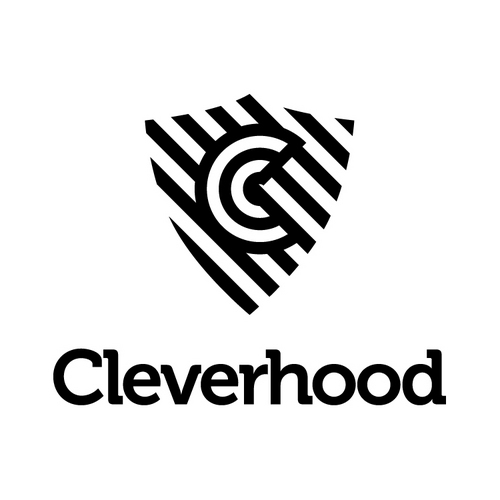For our February adventure I did something unheard of: I planned a trip! After some map consulting, I planned our route across the Florida Panhandle: the first night’s destination was 50 miles away in Lake Seminole in Chattahoochee, and the second day’s journey was to the Florida Caverns in Marianna.
But first things first. The most important decision of any trip: who’s gonna watch the cats?? Duh, the cat-sitters (my parents).
From there, we were ready to leave. Well, almost. Though it was a beautiful sunny day, it wasn’t warming up like I expected it to. Aaaaaand this is where my excellent planning didn't really pan out so well-- I had forgotten to check the weather. HIGH of 58? That’s not warm! We made a slight detour to my farm so I could grab my windbreaker, and then we were off. NBD.
We traveled North out of Tallahassee till we reached Shady Rest Road, which takes you right into one of Tallahassee’s sleeper communities: Quincy, FL. The remnants of its prosperous past linger—huge white mansions with imposing columns and brick-laid downtown buildings.
But Quincy and the surrounding Gadsden County have always depended on agricultural to survive, and agriculture is dying out. The thing is, the South never really had much going for it in terms of equality. Unlike Northern colonies, the South was less about settlement and more about resource extraction. After Southern colonists stole land from the Native Americans, they also stole people from Africa, and then a very few people owned very large tracts of land and made a lot of money growing cotton. Slavery and plantation agriculture left a legacy of inequality that didn’t change much after the Civil War.
In Gadsden County the crop was shade tobacco. Before and after the Civil War, the fine, tender leaves of tobacco grown under yellow cotton shade cloth were used as cigar wrappers. Unlike cigarette tobacco, which was grown in full sun and harvested mechanically, the entire harvesting and curing process for shade tobacco was done by hand. Bruised or crushed leaves were worthless. Afterwards, the leaves were hung to cure in tobacco barns for a few months. So even after Emancipation, the work in the tobacco fields continued in startlingly similar conditions.
Tobacco made some people very wealthy. In the late 60s almost every cigar was wrapped with leaves from Gadsden county. But now, as traditional agriculture dies out across the South and the rest of the country, Quincy and towns like it are left in a real tough spot. This is the legacy of plantation farming: the population of Quincy is 64% black, one in five people live under the poverty line, and the average income is $15,000. Farming jobs aren’t as easy to come by as they used to be, and now Quincy is going to have to make itself economically viable another way. The relics of the farming past still stand on the farmland outside of town, and it's crazy to think how much history is kept in this land.
Travis and I are both farmers, but very different kinds of farmers from the producers in Quincy and other parts of the rural South. We both run very small urban farms that specialize in a dozens of crops instead of just one. We both farm using organic methods, which means we don't use chemicals to poison insects and weeds. Urban farming is becoming more and more hip, and as foodie culture becomes more of the mainstream, "local and organic" are the buzzwords that every restaurant uses to draw in more customers. What I'd like to see is the excitement about the local food movement to be translated to economic success for the dying agriculture communities on our city fringes. There are staggering amounts unused farmland that could be used to grow agricultural economies. I want a world where farming in Quincy is not only possible, but profitable.
As it stands now, our rural Southern towns have to go to desperate measures to stay alive, and a lot of times that means they turn to gambling to attract folks in from Tallahassee. Gretna, the town just Northwest of Quincy, has put up billboards all over Tallahassee to entice people to bet on barrel racing and poker clubs.
We came upon a gambling relic as we continued along West, somewhere along Flat Creek Road between Gretna and Chattahoochee. A giant warehouse loomed in the distance, while cows grazed right beside it. I thought it was a slaughterhouse. But as we got closer, we read Big Bend Jai Alai on the sign that towered over an overgrown parking lot.
Though Jai Alai originated in the Basque region of Spain in the 1800s and was once an Olympic sport, its American incarnation was a gambling sport. The first Jai Alai arena was built in Miami in 1925, and there were arenas all over the state in the 70s. Some poor schmuck was convinced to build an arena in the middle of nowhere in the Panhandle in the 90s. Needless to say, the economic boom it promised to Gadsden County didn’t pan out.
At least it was good for some abandoned building snooping. The stadium and playing arena were still in tact, and I could just imagine it being packed with folks balancing rum and cokes and hot dogs, cheering with their friends after work and hoping to win a bet. Now, the most impressive aspect is how quickly the grass has taken over the asphalt parking lot.
We continued North on Little Sycamore Road and cruised into Chattahoochee with plenty of daylight left, and snagged a bag of boiled peanuts from a roadside stand, which also served as a permanent yard sale and BBQ joint.
Lake Seminole is a destination for the region, and the Army Corps of Engineers runs a campsite at Woodruff Dam. The camping was on the other side of the state border in Georgia, so we rode the few miles further North till we saw the park entrance. This park did have “primitive” camping, which means that there were two sites off by themselves on the other side of the parking lot that they didn’t run electricity to. But when they say waterfront camping, they mean waterfront camping.
Lake Seminole is a dammed lake that meets at the confluence of the Flint River and the Chattahoochee River. The Apalachicola River continues on past the lake and flows into the Gulf. The Woodruff Dam was built in 1947 to capitalize on hydroelectric power and to control the pesky destruction that happens when people build their houses along floodplains.
Now Lake Seminole is a fishing destination for people who like to spend time outdoors by packing enormous, gas-guzzling RVs into asphalt parking lots. I am not as judgmental as I used to be (I’m still judgmental), and I understand that RVs are going to be a permanent fixture of most the camping that I do. I actually respect retired people who want to travel and see the country rather than join a country club and play golf till they die. But there’s just the… American-ness of it. We pulled up in this RV park and I saw a guy “walking his dog” by driving alongside his golden retriever in his black SUV. DUDE COULDN’T EVENT GET OUT OF HIS CAR TO WALK WITH HIS DOG. Never mind the fact that all these RVs are fully hooked up to electricity, and most people bring their satellite dishes with them so they don’t have to miss their shows while “out in nature”. If you’re gonna get outside people, then GET OUTSIDE. Believe it or not, the sunset can put on a better show than American Idol.
Anyway. When we got off our bikes and started to set up camp, I discovered that a cotton hoodie is probably not the best way to keep warm while exercising. The temperature was dropping fast after sunset, and if I had actually looked at the forecast earlier I would have seen that the low was 31 degrees. I just couldn’t get warm, most likely because my hoodie was damp with sweat. So that will be my next gear purchase: a wicking jacket that won’t leave me shivering when I dismount my bike.
We still had enough light to collect firewood, and soon enough I built a nice little fire and warmed up sufficiently. Dinner was Indian packs and rice. I read for a while, but once that sun goes down it is difficult to stay motivated to do anything in the cold.
Travis and I ventured into the tent, where we began an epic struggle to stay warm by cuddling. We don’t camp with sleeping bags, ostensibly because of the extra weight but really because you can’t spoon in two sleeping bags. We have one Therm-a-rest camping blanket made of sleeping bag material that we squeeze under, and it has served us well. But there was some DESPERATE snuggling that night. In fact we woke up at least six times so we could switch off who was spooning who. My left side would fall asleep while I clutched Travis' warm little body, then I would groggily murmur "Switch!" and turn over on my right side so he could cuddle me. It almost made me envy the RV-ers. I DO have an emergency blanket but because of my astute planning I left it in my closet at home… so next time I’ll pack it. Just in case. You never know. In any case, the single camping blanket works down to about 30 degrees. Just not very comfortably.
We survived the night, and woke up to a chilly dawn. Then it was time for the second leg of this journey—Lake Seminole to the Florida Caverns, just a quick 26 mile jaunt one way. And this was when we got to see first hand that the Florida Panhandle really is the southernmost tip of the Appalachian Mountains.
















